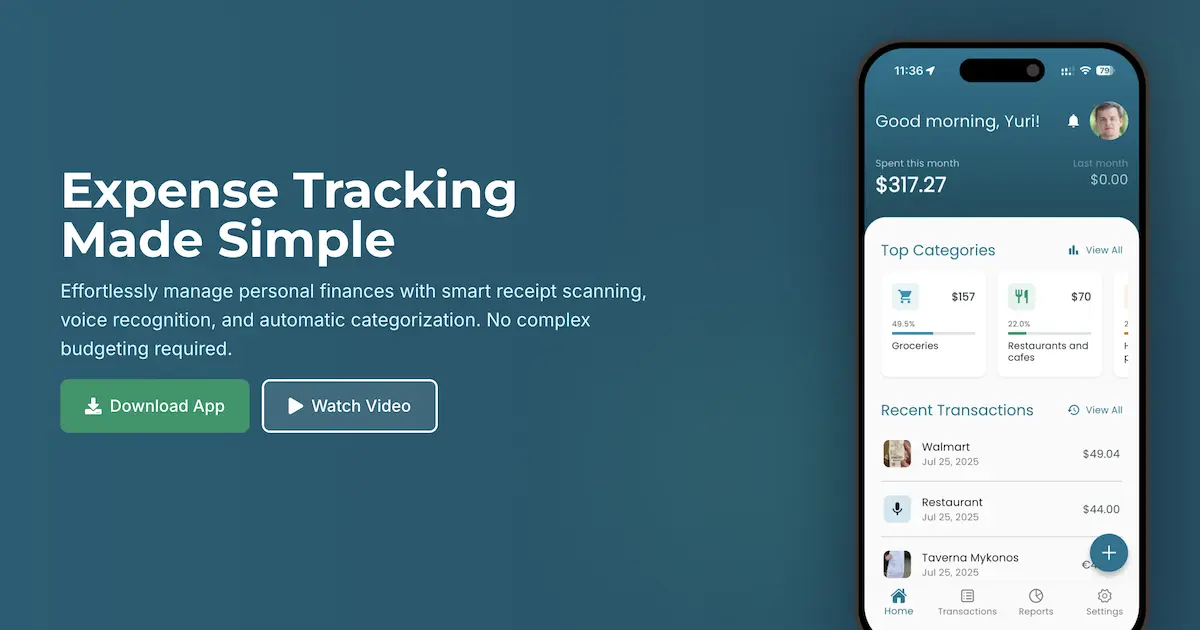5 Simple Steps to Start Tracking Your Expenses as a Beginner

If you’re just starting your personal finance journey, the idea of tracking every penny you spend might feel overwhelming. But here’s the good news: keeping track of your expenses doesn’t have to be complicated. With a few simple steps, you can take control of your spending, save more money, and gain a better understanding of where your finances stand. In this post, we’ll break down five easy ways to start tracking your expenses, even if you’re a total beginner.
1. Set Clear Financial Goals
Before you dive into expense tracking, it’s important to have a clear reason for doing so. Ask yourself, “Why do I want to track my expenses?” Are you trying to save for a vacation, pay off debt, or just figure out where your money is going each month?
Setting specific goals gives you a purpose and keeps you motivated. Whether it’s saving $500 over the next three months or simply cutting back on eating out, having clear financial goals will help you stay focused and make tracking your expenses feel more rewarding.
Action Step:
Take a few minutes to write down one or two short-term financial goals. Keep them realistic and specific, like “save $200 for an emergency fund in 2 months” or “reduce my takeout spending by 20%.”
2. Choose an Expense Tracking Method That Works for You
There’s no one-size-fits-all method when it comes to tracking expenses. Some people love using apps, while others prefer the old-fashioned pen-and-paper method. What’s most important is to pick a system that fits your lifestyle and that you’ll stick with.
Here are a few methods to consider:
- Spreadsheet: Use a simple Google Sheet or Excel document to record your daily expenses.
- Expense Tracking App: Mobile apps automatically categorize and track your spending (more on this later).
- Notebook: For those who prefer writing, a simple notebook where you list your expenses each day can also do the trick.
Action Step:
Try out a few different methods and see which one feels most natural for you. Don’t be afraid to experiment until you find a system that works.
3. Start Small and Track Daily Expenses
When you’re just starting out, it can be tempting to try and categorize every single purchase you’ve made in the last three months. But that can quickly become overwhelming. Instead, start small and focus on tracking your daily expenses.
Record every purchase you make, no matter how small — whether it’s your morning coffee, groceries, or an Uber ride. This daily habit will make you more aware of where your money is going and help you stay on top of your spending.
Action Step:
For the next week, commit to tracking every expense you make. Review your daily spending each evening to get a sense of where your money is going.
4. Categorize Your Spending
Once you’ve started tracking your expenses, the next step is to categorize them. This helps you see patterns and gives you a clearer picture of your financial habits. Common categories include:
- Housing (rent/mortgage, utilities)
- Groceries
- Transportation (gas, public transit, car maintenance)
- Dining Out
- Entertainment (movies, subscriptions)
By breaking your spending down into categories, you’ll be able to see areas where you may be overspending and where you could cut back.
Action Step:
Create a few simple categories for your expenses, and sort each transaction into one. If you’re using an app, this process may be automated.
5. Review and Adjust Your Budget Regularly
Tracking your expenses is just the first step — reviewing them is where the magic happens! At the end of each week or month, look over your spending and compare it to your financial goals. Are you sticking to your budget? Are there any areas where you can cut back?
This regular review helps you stay on track and make adjustments as needed. Maybe you discover that you’re spending more on takeout than you realized, or perhaps you’ve managed to save more than expected. Either way, reviewing your expenses helps you make informed decisions going forward.
Action Step:
Set aside 15 minutes at the end of each week to review your expenses and see if you’re on track with your goals.
How Receiptix Can Help Simplify the Process
Tracking your expenses can feel daunting, especially if you’re trying to do it all manually. This is where Receiptix comes in. It’s an AI-powered expense tracking app that makes the process simple and stress-free. With features designed specifically for beginners, it eliminates the headache of manual input while giving you clear insights into your spending habits.
Here’s how Receiptix can help:
- AI-Powered Receipt Scanning: Just snap a picture of your receipt, and the app automatically extracts and categorizes the information for you.
- Voice Mode Expense Logging: Too busy to type? Just speak into your device, and Receiptix will log the expense for you.
- Item-Level Tracking: Receiptix doesn’t just track the total amount spent; it breaks down each item on your receipt, giving you a deeper understanding of where your money is going.
- Smart Categorization: It learns your spending patterns and automatically sorts expenses into categories, saving you time.
By using Receiptix, you can streamline the expense-tracking process, making it easier to reach your financial goals without feeling overwhelmed.
Conclusion
Tracking your expenses doesn’t have to be complicated. By setting clear goals, choosing a method that works for you, tracking daily, categorizing your spending, and reviewing regularly, you’ll be well on your way to gaining control over your finances. And with tools like Receiptix, you can make the process even simpler. Start small, stay consistent, and soon enough, you’ll see how empowering it is to know exactly where your money is going.
Note: This blog post is for informational purposes only and does not constitute financial advice. Always consult with a financial advisor for personalized guidance.